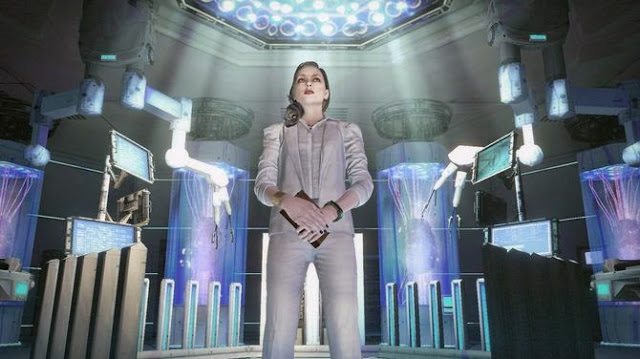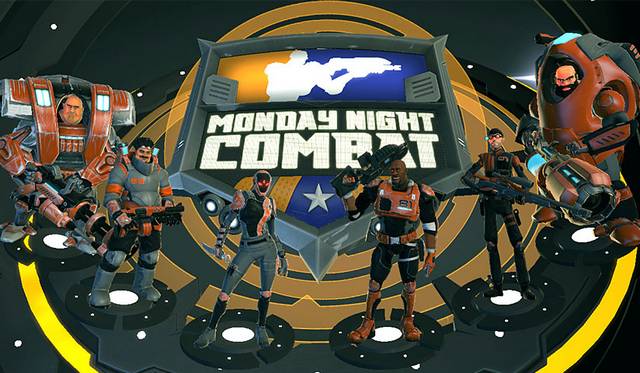

Does it live up to the hype? Does it celebrate in the way the occasion deserves? Or does Sonic Generations fail to deliver what many fans of the Blue Blur have so desperately wanted – a game that captures the fun of Sonic’s iconic days on the Genesis with a bit of modern flare?
As far as the story goes: In the present day, Sonic is having a party with all of his friends to celebrate – what else – his birthday. In the middle of the festivities, a dark monster appears in the sky, opening up portals and capturing each of the party-goers. Sonic himself falls into a portal and wakes up in a white world that contains bits and pieces of areas from his past. Now he has to travel through each of the worlds and rescue his friends, alongside the shorter, silent version of himself from the past, Classic Sonic.
There are a total of nine levels to play through, each group of three representing a different era of Sonic history – the Genesis Era (Sonic 1, 2, and 3 and Knuckles), the Dreamcast Era (Adventure 1 and 2 as well as Heroes), and the Modern Era (2006, Unleashed, and Colors). Gamers will be able to play through each level as both the Classic Sonic and the Modern Sonic – each of them with their own set of skills (and different level designs) to differentiate one from the other.
It wouldn’t be accurate to separate the two Sonic gameplay styles as merely “2D” and “3D” – since the Modern Sonic sometimes reverts to a 2D plane as well. That said, the Classic Sonic levels may be the more difficult ones for players not accustomed to 2D platformers. Classic Sonic doesn’t have a Homing Attack – and can’t double-jump. However, he can essentially drop onto enemies and destroy them – which would cause Modern Sonic to lose all of his rings. Classic Sonic also has his trademark Spin Dash – allowing him to zip ahead and run through a number of enemies as well as scale large ramps.
The Modern Sonic can use his Homing Attack, which has become a trademark game mechanic in recent years, as well as a energy boost that lets him speed ahead and plow through enemies. The boost isn’t game-breaking – a meter on the side limits the amount of boosting and can only be restored by collecting rings and defeating enemies.
Doubting gamers will be happy to know that this isn’t just a “press right to win” sort of game. Platforming is essential here – with a number of levels actually offering quite a challenge. There will be many times where the player could be cruising along, eagerly heading to the finish, only to run smack into a wall, or a ramp, or an enemy. The game tricks players into thinking they can just run to the end – then surprises them with obstacles. In that aspect, Sonic Generations does a good job of capturing the challenge of the original Sonic titles.
The boss fights are fairly easy and typically fall into two categories: Rival Battles and traditional Boss Fights. The Rival Battles pit Sonic against one of his Hedgehog counterparts – Metal Sonic, Shadow, or Silver. Once the player figures out how to defeat each rival, it becomes very easy to defeat them in a matter of minutes (especially with the hint system turned on) – especially the Shadow fight. The actual Boss Fights offer a bit more challenge but plenty of gamers will likely find the levels leading up to the bosses more challenging than the boss fights themselves.
Once players clear one “Era” (by completing all the respective levels), a series of Challenge Acts open up. These let gamers play through the levels, or certain parts of the levels, again under specific conditions. The conditions range from racing a doppleganger through the level to an increased number of enemies, among others. There are five different condition challenges per level – and each one is available to both Classic and Modern Sonic – meaning there are a lot of post-campaign challenges to complete.
Completing the Challenge Acts, as well as collecting Red Rings in the main levels, unlock various collectables for the player to enjoy. These are typically pieces of artwork from Sonic Generations, or music from past Sonic game levels – which will add replay value for nostalgic gamers. Also, the player can use the points that they earn from playing through the levels to purchase upgrades for Sonic – such as “start level with 10 rings” or “get energy for Boost Meter” and such.
The level design is well done, balancing both nostalgia and modern innovations. The levels in Sonic Generations are very similar to the original titles – though there are a number of tweaks that will make even the 2D sequences look fresh on a modern console. The music is also a great addition and returning “retro” songs feature both Classic and Modern versions.
Overall, players who enjoyed Sonic Colors will enjoy Sonic Generations. Beyond the simple boss battles, the only complaint that can really be made is that Sonic Generations is a bit thin on content – and will leave players wanting more. Only one level from each classic game is represented and gamers can only play through them once with each Sonic. The Challenge Acts beef up the replay – but it isn’t quite the same as playing through the actual levels again. For a big anniversary title, it’s rather lean – and if the player isn’t interested in collecting Red Rings or finding collectibles, they may not find as much to enjoy.
What do you think of Sonic Generations? Does it serve as a proper celebration of all things Sonic?
Sonic Generations is out now for the Xbox 360, PS3 and PC. The 3DS version will release on November 22, 2011.




 Ghost Recon: Future Soldier – Raven Strike Walkthrough
Ghost Recon: Future Soldier – Raven Strike Walkthrough Cher Lloyd drops new single What I Like feat. BenJ
Cher Lloyd drops new single What I Like feat. BenJ Resident Evil - Revelations 2 (PC) tips
Resident Evil - Revelations 2 (PC) tips Monday Night Combat Developers Video Walkthrough
Monday Night Combat Developers Video Walkthrough The Witcher 3: Wild Hunt Hearts of Stone Guide: How To Beat Toad Prince Boss
The Witcher 3: Wild Hunt Hearts of Stone Guide: How To Beat Toad Prince Boss